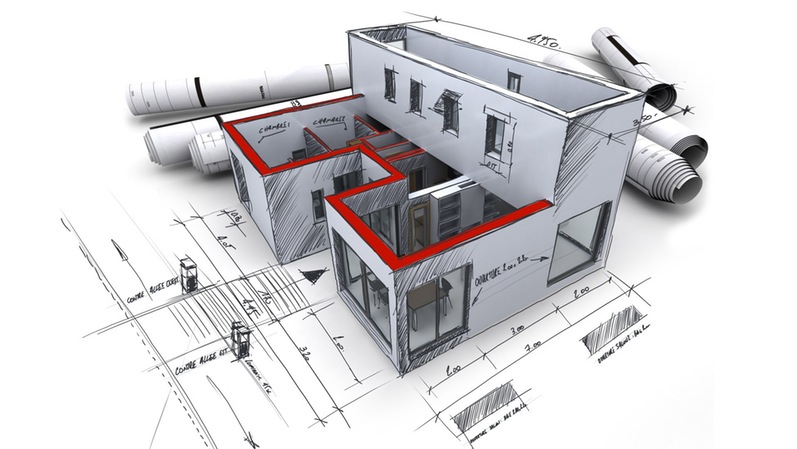Discover Cutting-edge Designs with Leading CDA Architects for Your Following Project
Discover Cutting-edge Designs with Leading CDA Architects for Your Following Project
Blog Article
A Detailed Review of Building Designs and Their Impact on Modern City Preparation and Advancement
Architectural designs have long offered as a mirror to the societal worths and technical innovations of their time, playing a critical function in shaping contemporary city planning and growth. From the splendour of Neoclassicism to the utilitarian approach of Brutalism, each design has introduced special ideas that affect city appearances and performance.
Historic Introduction of Building Styles
Throughout background, architectural designs have actually advanced in response to cultural, technological, and environmental factors. Each period mirrors the prevailing worths, ideas, and advancements of its time, leading to a rich tapestry of layout that symbolizes human creative thinking and adaptation. The ancient worlds, such as the Egyptians and Greeks, developed foundational styles that stressed symmetry and proportion, offering both practical and visual functions.
As societies transitioned with the Middle Ages, Gothic design arised, identified by its verticality and complex detailing, matching the spiritual aspirations of the era. The Renaissance marked a resurgence of timeless suitables, combining art and architecture in innovative methods that affected succeeding designs throughout Europe.
The Industrial Revolution presented brand-new products and building and construction techniques, prompting motions like Modernism, which challenged conventional kinds and accepted simpleness and functionality. The 20th century saw a diversification of styles, with Postmodernism reacting against the raw minimalism of its predecessor, integrating historical references and eclectic elements.
Today, architectural designs remain to evolve, driven by globalization and sustainability concerns, showing a dynamic interplay between heritage and innovation. This historic overview underscores the importance of design as a mirror of societal development and as a stimulant for urban development.
Secret Architectural Styles Explained
The diversity of architectural designs reflects the myriad influences that form our developed atmosphere, each symbolizing distinct characteristics and social relevances. Secret architectural styles include Timeless, Gothic, Baroque, Modernism, and Postmodernism, each representing one-of-a-kind historic contexts and aesthetic philosophies.
Classic architecture, rooted in old Greece and Rome, highlights symmetry, percentage, and the use of columns. On the other hand, Gothic design, growing in the Middle Ages, is identified by sharp arches, ribbed safes, and flying buttresses, creating an ethereal top quality in cathedrals. Baroque design, arising in the 17th century, is noted by majesty, fancy ornamentation, and a vibrant interaction of light and shadow.

Recognizing these designs gives understanding right into the cultural narratives and technological improvements of their corresponding periods, highlighting just how design offers not equally as a shelter, but as a representation of social worths and ambitions.
Effect On Urban Planning
In forming the development of cities, architectural styles significantly affect city planning decisions. The option of building design typically determines the aesthetics, capability, and overall character of urban environments.
Furthermore, architectural styles can impact zoning laws and land make use of policies. Urban planners have to consider the prevailing building trends when designing areas, making sure that new growths integrate with existing structures. This consideration fosters natural urban landscapes and improves community identification.
The execution of certain architectural styles can additionally influence socioeconomic factors within a city. As an example, high-end contemporary styles may draw in affluent residents and services, resulting in gentrification, while more budget-friendly housing solutions could prioritize practical and sustainable designs to accommodate varied populaces. Inevitably, the interaction in between building styles and metropolitan preparation develops vibrant cities that mirror both historical context and contemporary requirements, forming the lived experiences of their occupants.
Sustainability and Modern Architecture
Architectural designs play an essential duty in see this site resolving modern challenges, particularly in the world of sustainability. As urban areas increase and ecological problems magnify, modern-day style increasingly accepts sustainable layout principles that focus on power effectiveness, resource preservation, and very little internet environmental impact.
Contemporary architectural motions, such as biophilic style and green architecture, advocate for structures that harmonize with their surroundings, using all-natural materials and promoting biodiversity - cda architects. These styles often include eco-friendly energy resources, such as photovoltaic panels and wind generators, to reduce dependence on nonrenewable fuel sources and reduced carbon impacts
Additionally, the combination of sophisticated modern technologies, such as clever building systems, boosts power administration, maximizing resource usage while making certain resident convenience. Innovative water management techniques, including rain harvesting and greywater recycling, additional add to sustainable city atmospheres.
Significantly, sustainability extends past ecological concerns; it includes social and financial dimensions also. By promoting area health and advertising inclusivity, modern building designs straighten with sustainable development goals. Subsequently, the development of building methods remains to shape resistant cities that not just fulfill the requirements of the existing but also safeguard the future for generations to come.
Neighborhood Engagement in Style
Community engagement in layout acts as a crucial bridge in between designers and the populaces they serve, making certain that the constructed setting shows the needs and ambitions of its customers. This collective procedure welcomes neighborhood participants to add their insights and preferences, promoting a feeling of possession their website and obligation towards the areas they populate.
Reliable community engagement utilizes numerous methods, such as workshops, surveys, and public forums, to gather varied perspectives (cda architects). These techniques help with a two-way discussion, permitting architects to understand local contexts while encouraging homeowners to articulate their concerns and desires. This inclusivity not just enhances the design high quality yet also advertises social equity by attending to the one-of-a-kind obstacles faced by marginalized teams

Conclusion
Architectural designs have exceptionally affected modern city planning and development, showing progressing cultural and technological contexts. The assimilation of historical aesthetic appeals with modern demands fosters metropolitan environments that focus on sustainability and area interaction. As cities continue to expand and adapt, the ongoing dialogue in between building heritage and contemporary design principles will stay vital in developing comprehensive, lively rooms that enhance quality of life and advertise social equity. The future of city advancement depend upon this harmonious balance.
Report this page